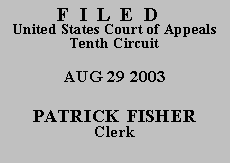

| UNITED STATES OF AMERICA,
v.
EDWARD KOSKEY |
|
We review the district court's factual determination of a U.S.S.G. § 2F1.1 loss for clear error, but the factors the district court may properly consider are reviewed de novo. United States v. Banta, 127 F.3d 982, 983 (10th Cir. 1997); see also United States v. Galbraith, 20 F.3d 1054, 1058 (10th Cir. 1994). Our jurisdiction arises under 28 U.S.C. § 1291 and 18 U.S.C. § 3742(a), and we affirm.
Section 2F1.1 applies to crimes involving fraud and deceit, including violations of 42 U.S.C. § 408(a)(7)(B). Under this guideline, the offense level is calculated based in part on the dollar value of the loss involved in the criminal conduct. See U.S.S.G. § 2F1.1(b)(1). If an intended loss can be determined and it exceeds the actual loss, the court should use the intended loss to calculate the defendant's offense level. See id. cmt n.8 ("[I]f an intended loss that the defendant was attempting to inflict can be determined, this figure will be used if it is greater than the actual loss."); United States v. Smith, 951 F.2d 1164, 1166 (10th Cir. 1991). Indeed, the commentary provides a very pertinent example: "[I]f the fraud consisted of . . . representing that a forged check for $40,000 was genuine, the loss would be $40,000." U.S.S.G. § 2F1.1(b)(1) cmt n.8. Note 8 also refers to U.S.S.G. § 2B1.1, wherein application note 2 plainly states: "In the case of a theft of a check or money order, the loss is the loss that would have occurred if the check or money order had been cashed." U.S.S.G. § 2B1.1 cmt. n.2. The reason the intended loss figure is used, even if it is significantly greater than the actual loss, is to measure the magnitude of the crime at the time it was committed. United States v. Janusz, 135 F.3d 1319, 1324 (10th Cir. 1998).
Mr. Koskey contends that the economic reality doctrine precludes the district court's determination as to the amount of the intended loss. See United States v. Santiago, 977 F.2d 517, 524 (10th Cir. 1992) (holding that intended loss under § 2F1.1 cannot exceed the loss a defendant "in fact could have occasioned if his or her fraud had been entirely successful"). The rationale of Santiago does not apply here given the clear direction of the Sentencing Guidelines and the sums certain appearing on these instruments. See, e.g., United States v. Haber, 251 F.3d 881, 892-93 (10th Cir. 2001) (holding that an intended loss is economically feasible and thus appropriate under § 2F1.1 if the defendant was "capable of inflicting the loss and had some reasonable prospect of success").
In the course of their misfeasance, Mr. Koskey and his wife made two separate fraudulent deposits of counterfeit checks into an account at TCF National Bank: one for $25,000 (of which $2,289 was withdrawn) and another for $250,000. After the second check for $250,000 was deposited, the bank placed a hold on all uncollected funds in the account. Mr. Koskey argued that this was normal commercial practice, but the district court rejected this contention for lack of evidence. Instead, the court found that the bank became suspicious.
Even though the bank acted, the economic reality doctrine does not require a different result when it comes to intended loss. Here, the funds became "unattainable" because the bank grew suspicious and put a hold on Mr. Koskey's uncollected funds, not because it was not "realistically possible" for Mr. Koskey to inflict that amount of loss. See Aplt. Br. at 7. Here, we are dealing with sums certain on the face of would-be commercial instruments tendered to the bank for deposit. We agree with those courts that have relied upon the face value of such instruments in determining intended loss. See United States v. Kipta, 212 F.3d 1049, 1052 (7th Cir. 2000) (holding that even though only $38,219 had been actually withdrawn, the district court correctly sentenced the defendant based upon the total amount of the fraudulent deposits, calculated at $171,355); see also United States v. Higgins, 270 F.3d 1070, 1074-75 (7th Cir. 2001). The district court's finding that had the scheme operated as was planned the intended loss would amount to $306,222 is not clearly erroneous.
AFFIRMED. The mandate shall issue forthwith.
Entered for the Court
Paul J. Kelly, Jr.
Circuit Judge
*. This order and judgment is not binding precedent, except under the doctrines of law of the case, res judicata, and collateral estoppel. This court generally disfavors the citation of orders and judgments; nevertheless, an order and judgment may be cited under the terms and conditions of 10th Cir. R. 36.3.
2. After examining the briefs and the appellate record, this three-judge panel has determined unanimously that oral argument would not be of material assistance in the determination of this appeal. See Fed. R. App. P. 34(a); 10th Cir. R. 34.1(G). The case is therefore ordered submitted without oral argument.